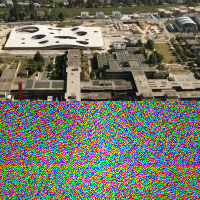When the iPhone Meets Fourier
Spring 2011
Master Semester Project
Project: 00202

Conveying to students the interest of representing an image in the Fourier domain is often a lost cause. One fundamental reason is that human beings are such that their eyes and brain enjoy an inherently spatial perception of the visual world. Thus, interpreting an image in the Fourier domain always will remain an acquired taste. But there is a second obstacle: not only are humans used to a visual perception that is spatial, they are also accustomed to view scenes change through time.
To help overcome this second obstacle, in this project we propose to build a real-time iPhone application that captures images and restitutes them simultaneously as a pair of displays, one depicting each frame as acquired spatially (i.e., a traditional image), and the other one depicting its 2D Fourier transform. By pointing the camera of the iPhone towards various scenes of interest, the Fourier display will change accordingly. This interactive nature of the application should provide for a more memorable experience of Fourier relations with the space domain.
The project will be conducted partly in Java on ImageJ, where issues like the most attractive display of the phase and amplitude of the spectrum of an image will be investigated, along with questions regarding the handling of the colors found in the input image. The bulk of the project will then take place in ObjectiveC on an iPhone, where the real-time aspects of the processing will become crucial.
Requirements: to be following or to have followed the course on image processing taught by Michael Unser.
To help overcome this second obstacle, in this project we propose to build a real-time iPhone application that captures images and restitutes them simultaneously as a pair of displays, one depicting each frame as acquired spatially (i.e., a traditional image), and the other one depicting its 2D Fourier transform. By pointing the camera of the iPhone towards various scenes of interest, the Fourier display will change accordingly. This interactive nature of the application should provide for a more memorable experience of Fourier relations with the space domain.
The project will be conducted partly in Java on ImageJ, where issues like the most attractive display of the phase and amplitude of the spectrum of an image will be investigated, along with questions regarding the handling of the colors found in the input image. The bulk of the project will then take place in ObjectiveC on an iPhone, where the real-time aspects of the processing will become crucial.
Requirements: to be following or to have followed the course on image processing taught by Michael Unser.
- Supervisors
- Philippe Thévenaz, philippe.thevenaz@epfl.ch, 021 693 51 61, BM 4.137
- Michael Unser, michael.unser@epfl.ch, 021 693 51 75, BM 4.136